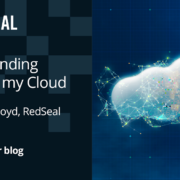RedSeal Announces Distribution Agreement with TD SYNNEX, providing RedSeal to Resellers in North America
RedSeal Inc., the award-winning cyber terrain analytics platform announces a strategic agreement with TD SYNNEX
The joint alliance offers MSSPs and security resellers a new and innovative way to identify and address cyber threats while combating the latest and most prevalent security business challenges.
RedSeal’s platform shows organizations what is on their networks, how everything is connected, and the associated risk across physical—and cloud-based network environments. RedSeal verifies that network devices are securely configured, validates network segmentation policies, and continuously monitors compliance with policies and regulations. It also prioritizes mitigation based on each vulnerability’s associated risk.
The agreement marks the continued expansion of the TD SYNNEX security portfolio, which addresses the rapidly evolving threat landscape with leading solutions and the support of veteran network engineers available to consult on every point of the sales cycle.
“We here at RedSeal are extremely excited about working with TD SYNNEX moving forward. They will be a true force multiplier as we expand our portfolio and will allow us to reach additional markets. The potential here is significant, and we appreciate the opportunity to expand our reach together,” said Jay Miller, Vice President Worldwide Sales, RedSeal.
“We are pleased to work with RedSeal to bring a new, cloud-based security solution to our partners,” said Reyna Thompson, Senior Vice President, North America Advanced Solutions Security and Networking, TD SYNNEX. “RedSeal delivers an all-encompassing solution that we are confident will provide value for many of our reseller partners.”
For more information on RedSeal through TD SYNNEX, contact redseal@synnex.com.
About RedSeal
We boldly deliver on our promise to help organizations master cybersecurity fundamentals in a world of rapidly escalating cyber complexity and threats. We do this by providing a cloud security solution by which every global organization can be confident that it understands what’s on the network, how it’s connected and the associated risks. Founded in 2004, RedSeal is headquartered in San Jose, California.
About TD SYNNEX
TD SYNNEX (NYSE: SNX) is a leading global distributor and solutions aggregator for the IT ecosystem. We’re an innovative partner helping more than 150,000 customers in 100+ countries to maximize the value of technology investments, demonstrate business outcomes and unlock growth opportunities. Headquartered in Clearwater, Florida, and Fremont, California, TD SYNNEX’ 22,000 co-workers are dedicated to uniting compelling IT products, services and solutions from 1,500+ best-in-class technology vendors. Our edge-to-cloud portfolio is anchored in some of the highest-growth technology segments including cloud, cybersecurity, big data/analytics, IoT, mobility and everything as a service. TD SYNNEX is committed to serving customers and communities, and we believe we can have a positive impact on our people and our planet, intentionally acting as a respected corporate citizen. We aspire to be a diverse and inclusive employer of choice for talent across the IT ecosystem. For more information, visit www.TDSYNNEX.com
© 2021 SYNNEX Corporation. TD SYNNEX, the TD SYNNEX Logo, and all other TD SYNNEX company, product and services names and slogans are trademarks of SYNNEX Corporation. Other names and trademarks are the property of their respective owners.

